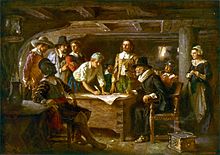- Austin Cowles Hyde
- Born: April 12, 1858 Salt Lake City, Utah
- Died: March 18, 1941 Rupert, Idaho
- Related through: Elvira Wilde
My father, Austin Cowles Hyde, was born in Salt Lake City, 12 April 1858. His father’s family came west with the pioneers of 1843. They lived in Salt Lake City until the spring of 1858 when they joined a party of Saints going south to locate. The family came back the same year and located in Kaysville, Utah. They built a home that stood for one hundred years before it was torn down to clear the way for a new highway. I know very little of my father’s early life.
When the railroad came west, it passed through grandfather’s farm and father went to work on the railroad. He told me that he was foreman of the rail crew that laid the first rail from Pocatello, Idaho to Butte City, Montana. I do no know how long he worked there.
He married Mary Melissa Griffeth of Hyde Park, Utah in April 1880. This was very much through the efforts of his older brother, Heman, who had already married Mary’s sister. Our first home was in Fairview, Idaho where we lived until our family numbered four. One died in infancy.
About this time the federal men were making it quite tough on the polygamists so my Grandfather Griffeth and Uncle Heman Hyde decided to move to Star Valley and as I remember, we had besides our household goods, four children, a few chickens and led two cows behind the wagon. I can really picture the trip as a very tedious one.
Later the issue of polygamy was dying down and Grandfather Griffeth decided to move back to Cache Valley, so his two families would be closer together. Father still owned his farm in Cache Valley so he and grandfather traded and we moved into our new home in the town of Auburn, Wyoming in 1893. It consisted of one room of log construction and dirt roof. It had 160 acres of choice meadowland with plenty of spring water. Our living quarters were very inadequate, so the first job was another room of the same construction. These two rooms served us as a home for several years. During those years father hauled logs from the canyons to the sawmill until he had enough material to build a large house and barn.
Once provisions were getting short and we were about 50 miles from the railroad. Wild game was plentiful so father and Uncle Heman decided to get an elk, but they came home with a mother bear and two cubs instead.
We now belonged to the Auburn Ward. Father’s brother Heman was bishop and held the office for thirty years. Auburn was a typical frontier town. It had a store, post office, a one-room church and a one-room school with the population of around fifty. A good number of them were people who could not get along anywhere else. The only entertainment was dancing and the town people would give us two or three plays during the winter. Father belonged to the group and usually took the part of the old man. Uncle Heman was most generally the hero.
After we moved to Auburn, Father joined as a caller because the only dancing was square dancing. Sometimes there were waltzes, but a couple could not dance more than two together because it was thought they were getting too close. Therefore most of the dancing was square dancing. Father was a big man and to site one incident, as he was calling squares, two men entered the dance hall, which was really the church house. They were drunk, so my father went over and asked them to straighten up or leave. One man pulled a gun on him. Uncle Heman came over to help, but father knocked the man down who had the gun and the two of them dragged them both outside. Afterwards they discovered that the gun wasn’t even loaded.
 |
| Auburn home about 1914. |
Father led the singing for a good many years, and often during the winter months he would teach music to anyone interested with no charge. There was no organ or piano available so his equipment consisted of a tuning fork and a baton.
Time changed all of these things and at 18 years of age, I went on a mission to the Eastern States. Some of the family was married and some went to college. Now that the family was pretty well taken care of, father decided to go on a two-year mission to the Northwestern States. Upon his return, he served as high councilman in the Star Valley Stake.
After ten years of trial, my wife, Carrie, and I decided we wanted to farm and the only way we could do that successfully was to leave Star Valley. When we got ready to move, father and mother were ready to go with us. We left Wyoming on the 19th of March 1919 and located in Rupert, Idaho three days later. Within two years all of the family had moved to Rupert.
Father had depended on paying for his farm from the sale of his property in Wyoming, but it did not seem to work out and he lost all of his property except for enough to buy a small home across the street west of the Washington School in Rupert and a shoe repair shop which took care of their needs as long as they were able to work.
There were eleven children born to this couple. Father was an honest, hard workingman and passed away at the age of 82 in 1941.
Written by Rosel P. Hyde, son, Fall of 1959. Article found at familysearch.org.


